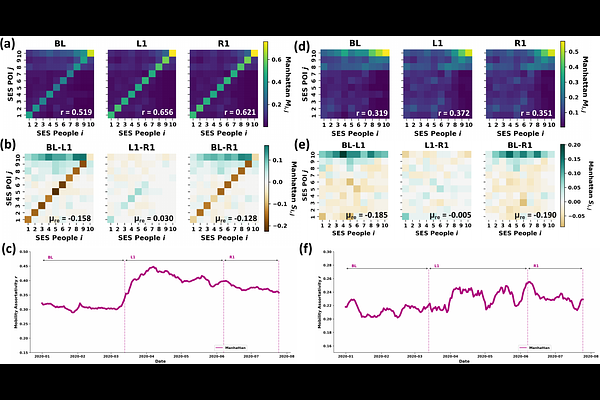Mobility Segregation Dynamics and Residual Isolation During Pandemic Interventions

Mobility Segregation Dynamics and Residual Isolation During Pandemic Interventions
Rafiazka Millanida Hilman, Manuel García-Herranz, Vedran Sekara, Márton Karsai
AbstractExternal shocks embody an unexpected and disruptive impact on the regular life of people. This was the case during the COVID-19 outbreak that rapidly led to changes in the typical mobility patterns in urban areas. In response, people reorganised their daily errands throughout space. However, these changes might not have been the same across socioeconomic classes leading to possibile additional detrimental effects on inequality due to the pandemic. In this paper we study the reorganisation of mobility segregation networks due to external shocks and show that the diversity of visited places in terms of locations and socioeconomic status is affected by the enforcement of mobility restriction during pandemic. We use the case of COVID-19 as a natural experiment in several cities to observe not only the effect of external shocks but also its mid-term consequences and residual effects. We build on anonymised and privacy-preserved mobility data in four cities: Bogota, Jakarta, London, and New York. We couple mobility data with socioeconomic information to capture inequalities in mobility among different socioeconomic groups and see how it changes dynamically before, during, and after different lockdown periods. We find that the first lockdowns induced considerable increases in mobility segregation in each city, while loosening mobility restrictions did not necessarily diminished isolation between different socioeconomic groups, as mobility mixing has not recovered fully to its pre-pandemic level even weeks after the interruption of interventions. Our results suggest that a one fits-all policy does not equally affect the way people adjust their mobility, which calls for socioeconomically informed intervention policies in the future.